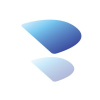
Digilens
An innovator in holographic waveguide display technology for extended reality (XR).
| Date | Investors | Amount | Round |
|---|---|---|---|
| - | investor investor investor | €0.0 | round |
| N/A | €0.0 | round | |
| investor | €0.0 | round | |
| investor investor investor investor investor investor investor investor | €0.0 | round | |
| investor | €0.0 | round | |
| investor investor | €0.0 | round | |
| investor investor investor investor investor | €0.0 | round | |
| investor | €0.0 | round | |
| investor investor investor investor investor investor investor | €0.0 Valuation: €0.0 | round | |
* | N/A Valuation: $530m | Series D | |
| Total Funding | 000k | ||
Related Content
The story of DigiLens begins in 2003, with its founder, Jonathan Waldern. Waldern, a British scientist and entrepreneur, established the company to solve a core challenge in augmented reality: the optics. The goal was to create waveguide displays – essentially, the clear lenses in a pair of glasses that could project digital information onto the real world. For years, DigiLens operated in a deep research and development phase, refining its holographic waveguide technology. The company focused on creating lenses that were brighter, more efficient, and manufacturable at a lower cost than competing solutions. Their approach uses a photopolymer material and a holographic printing process, a key differentiator in the complex field of AR hardware. A significant chapter in the DigiLens story unfolded through its strategic partnerships and funding. Instead of building its own consumer headset, DigiLens positioned itself as a key component supplier to other companies. This strategy attracted major players. In 2017, the company announced a Series C funding round with investments from strategic partners like Sony and Foxconn. This was followed by a major investment from the German automotive supplier Continental, signaling the technology's potential in vehicle heads-up displays. More recently, in 2022, DigiLens raised over $50 million in a Series D funding round, with participation from companies like Samsung Electronics, further validating its technology and market position.